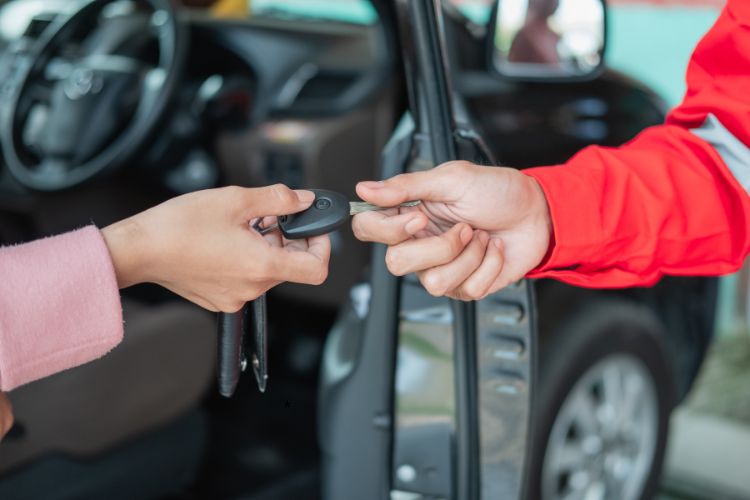With new tariffs driving up the cost of imported vehicles, both new and used car prices are skyrocketing. Estimates suggest that these tariffs could add anywhere from $3,000 to $7,000 to the price of a new car, and as a result, used car prices are also on the rise. This shift in the automotive market makes it the perfect time to rethink your vehicle ownership strategy. Instead of purchasing a new or used car at an inflated price, investing in the maintenance and repair of your current vehicle is a far more cost-effective and practical choice. Here’s why keeping up with regular auto service and repairs is the smarter financial move right now.
The Rising Costs of New and Used Cars
The automotive industry is feeling the impact of new tariffs, with import vehicle prices soaring due to increased manufacturing and shipping costs. If you were considering buying a new car, you might find that the same model you were eyeing, just a month or two ago, is now significantly more expensive. Even used cars are seeing a price surge as demand increases due to the high costs of new vehicles.
For many car owners, this means a tough decision: shell out more money for a new or used vehicle or make the smarter move—investing in the car they already own.
The Financial Advantage of Maintaining Your Current Vehicle
When you compare the cost of maintaining your current vehicle with the price of purchasing a new one, the numbers make a compelling argument. Routine maintenance—such as oil changes, tire rotations, brake inspections, and fluid checks—ensures your car stays in good condition and extends its lifespan. Even major repairs, such as a new transmission or engine work, often cost far less than a down payment and years of monthly payments on a new vehicle.
Here’s a breakdown of why keeping up with maintenance makes more financial sense:
- Lower Monthly Expenses – Regular maintenance costs significantly less than monthly car payments, which can easily exceed $500 per month on a new vehicle.
- Avoid Depreciation – A new car loses value the moment you drive it off the lot. Your current vehicle, however, has already gone through the steepest depreciation phase.
- Fewer Additional Costs – Newer vehicles often come with higher insurance premiums, registration fees, and potential financing interest, adding to the long-term cost.
- Reliability and Longevity – With proper care, modern vehicles can last well beyond 200,000 miles, making it unnecessary to replace them as frequently as in the past.
Preventive Maintenance: The Key to a Long-Lasting Vehicle
One of the best ways to ensure your car remains reliable and roadworthy for years to come is through preventive maintenance. Here are some of the most critical maintenance tasks to keep up with:
- Regular Oil Changes – Keeps your engine running smoothly and prevents costly repairs down the line.
- Brake Inspections and Service – Ensures safety and prevents more expensive issues in the future.
- Transmission and Coolant Fluid Checks – Helps prevent overheating and transmission failures.
- Tire Maintenance – Rotations, alignments, and replacements extend tire life and improve fuel efficiency.
- Battery and Alternator Inspections – Prevents unexpected breakdowns and costly towing expenses.
Sticking to a consistent maintenance schedule reduces the likelihood of major breakdowns and extends the life of your vehicle.
The Environmental Benefits of Keeping Your Current Vehicle
Beyond the financial advantages, keeping your current car well-maintained also has environmental benefits. Manufacturing a new car requires significant resources, including raw materials and energy. By driving your existing car longer, you reduce the demand for new vehicle production, which helps lower the overall carbon footprint.
Additionally, an efficiently running car emits fewer pollutants than one that is poorly maintained. Regular tune-ups, clean air filters, and properly inflated tires all contribute to better fuel efficiency and lower emissions.
When It Might Be Time to Consider a Replacement
While maintaining your current car is usually the best financial decision, there are instances when a replacement makes sense. If your car is experiencing constant breakdowns and repairs are becoming more frequent and expensive, you might need to evaluate whether it’s still cost-effective. However, before making a decision, consult with a trusted auto repair professional to weigh the cost of repairs against the cost of replacing the vehicle.
Final Thoughts: Invest in Your Vehicle’s Future
With the rising costs of new and used vehicles due to tariffs, now is the ideal time to focus on keeping your car well-maintained and repaired rather than taking on the financial burden of a new purchase. Regular service and timely repairs not only save you money but also ensure that your vehicle remains reliable, safe, and efficient for years to come.
Investing in your current vehicle is a smart move—both financially and practically. By following a proper maintenance schedule and addressing repairs promptly, you can enjoy many more years on the road without the stress of new car payments and inflated costs. If you need expert service to keep your car running at its best, schedule an appointment with your trusted local auto repair shop today.

